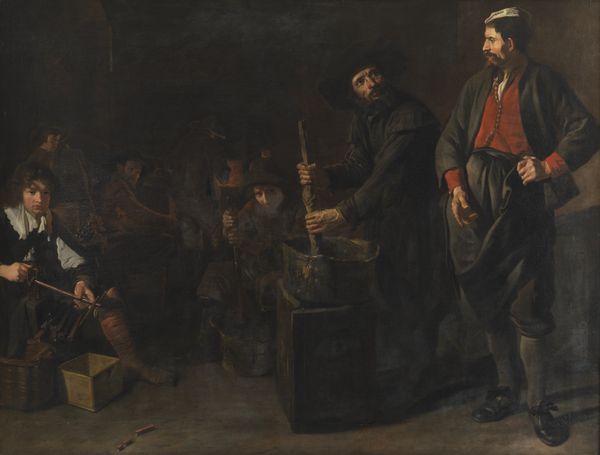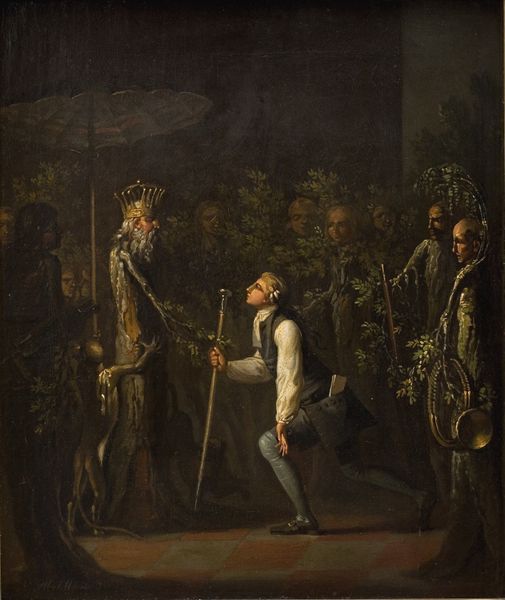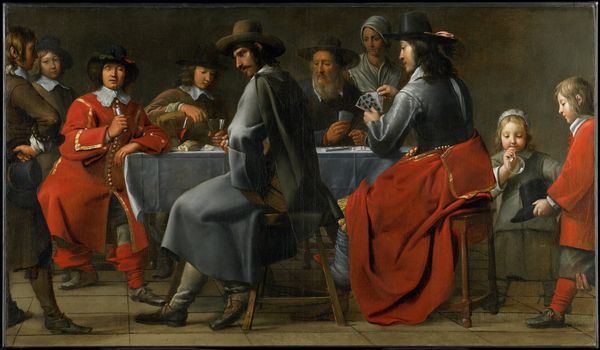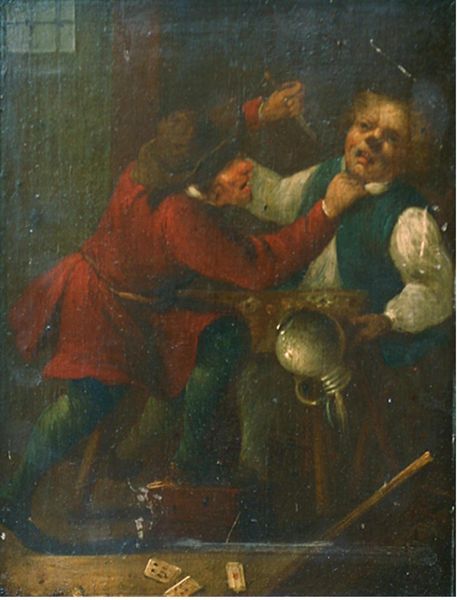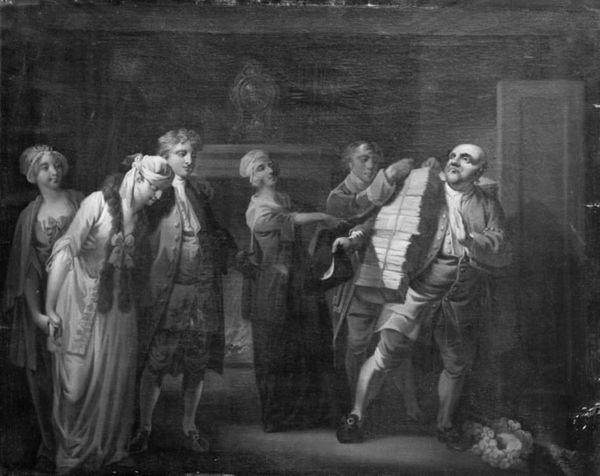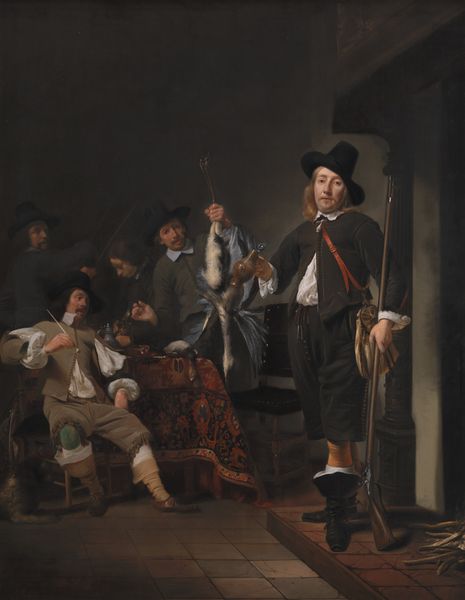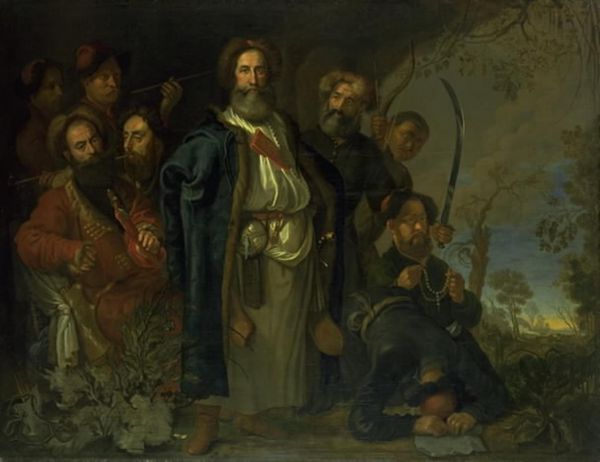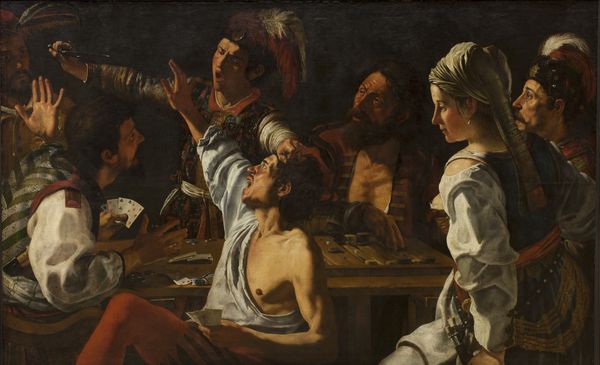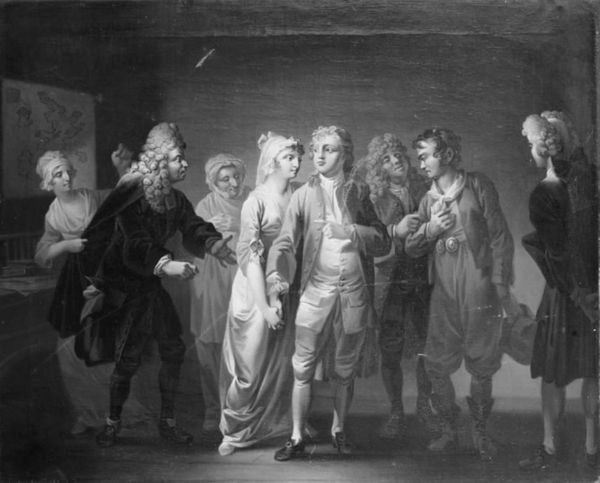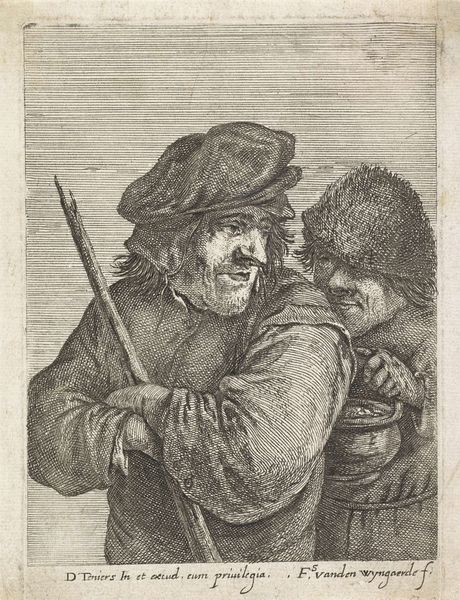
Self-Portrait in a Circle of Friends from Mantua 1602
peterpaulrubens
Wallraf-Richartz Museum, Cologne, Germany
painting, oil-paint
portrait
baroque
portrait
painting
oil-paint
group-portraits
genre-painting
history-painting
Dimensions 78 x 101 cm
Curator: Here we have Peter Paul Rubens's "Self-Portrait in a Circle of Friends from Mantua," created around 1602. What’s your initial take on it? Editor: There's something very immediate about it. I'm drawn to the rendering of fabric—it really gives volume to their forms and richness to this assembly of men. The slick oil paint seems to relish textures here. Curator: The painting offers us insight into Rubens's time in Mantua, Italy, and his relationship with the intellectual circles there. It speaks volumes about patronage and the role of courtly artists during the Baroque era. It definitely highlights the influence these individuals had on his artistic development. Editor: Indeed. The dark palette against that hazy sky also brings a sobriety to the scene. The subtle gradations of light seem deliberate. Was this painting for public display or meant for more intimate settings? It makes a big difference if it was a merchant commissioned display for one of his friend group versus just personal inventory Curator: It’s generally believed it was for a private collection. Which makes its political implications no less potent; visibility among the right people could open the doors of any artist’s practice at the time, regardless of whether that canvas ended up in a chapel or private library. Its very making signals connection and social positioning. Editor: Definitely—we must not forget how labor went into creating it. From pigment procurement, grinding and mixing paint, to the layering of those luxurious tones... each brushstroke shows dedicated material handling, giving an opulent texture and therefore emphasizing class position for artist and sitter. The Baroque period celebrated visual splendor while masking the labor-intensive processes behind them. Curator: The interesting choice of representing himself with these figures serves not just as a display of painterly prowess, but also as a political maneuver within a very specific cultural milieu of courts and patrons. These images mediated and facilitated Rubens' rise. Editor: Well said. Reflecting on our observations now, it’s the very tangible handling of medium together with that circle of companions that make the greatest impact. Curator: Precisely, and that intersection of political display with human craftsmanship makes this artwork particularly compelling.
Comments
No comments
Be the first to comment and join the conversation on the ultimate creative platform.
